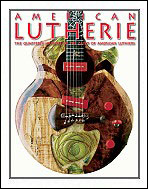 |
|
||||
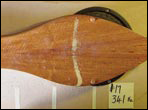 |
Letters Ever thought that the techniques of “glitter testing” (visualizing resonance patterns by observing powder distribution on instruments excited by loudspeakers) might be productively applied to mountain dulcimers? Richard Troughear has beaten you to it. |
||||
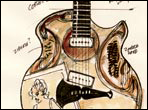 |
Nouveau Series Guitars by Michael Spalt Viennese luthier Michael Spalt was commissioned by Paul Schmidt to build a series of thirteen solidbody guitars based on the designs of Steve Klein and featuring authentic art objects cast into resin. Well, you don’t see that every day! Spalt shows us how he did it, step by step. |
||||
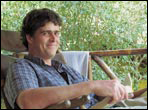 |
Meet the Maker: James Condino by Roger Alan Skipper Lots of luthiers have heeded the old adage “Don’t quit your day job.” James Condino’s day job is more like an all-day, all-night, months-at-a-time job. He does less outdoor adventure guiding now that he’s a husband and father with a thriving lutherie business, but he maintains an adventuresome approach to instrument design and life in general. Click the thumbnail to see him playing his own mandolin on the summit of Mt. Adams. When’s the last time you did that? |
||||
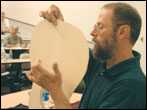 |
Finding Your Voice by Dana Bourgeois from his 2008 Convention workshop A few issues back, we printed Dana’s 2008 convention lecture in which he explained his theory of why his method of soundboard voicing works. In this issue we present a transcription of the workshop he gave at that same meeting. Here, he is actually stepping through the process of voicing a top. He tells us what he’s doing and why, and we see closeup photos of the steps. Also, check the “extras” section of this website for audio examples from the talk of before-and-after tap tones. |
||||
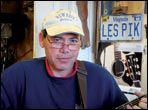 |
Meet the Maker: Ron Sharp by David Miracle Ron Sharp is a school teacher and guitar player who discovered that he lived nearby to legendary picker and luthier Wayne Henderson. One thing led to another, and now Ron builds flattop guitars based closely on Martin guitars of the late 1930s. He’s also into salvaged Belizean mahogany and does some harvesting of Adirondack spruce. |
||||
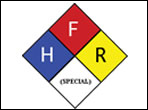 |
About Alcohols Used as Solvents in French Polishing by R.M. Mottola “Where can I get 100% pure grain alcohol for French Polishing?” That’s been a constant question we’ve been hearing for decades. Well, in practical terms, there’s no such thing. But don’t worry, you don’t need it. Mottola gives the full rundown on water content, liquor taxes, sources, and denaturants. |
||||
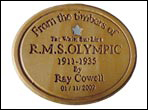 |
Modern Meets Traditional in the Olympic Uke by Thomas Johnson and Ray Cowell What would you do if you were a retired factory owner and happened to have access to the salvaged wooden interior trim from the RMS Olympic, which is the sister ship of the Titanic? Grab a CNC machine and start making ukes out of it, of course! That’s what Ray Cowell did, with help from local luthier Thomas Johnson. |
||||
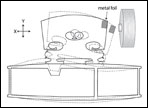 |
Magnetic Pickups and the Electric Violin by John W. Silzel Surprisingly, electric violins with magnetic coil pickups were patented before electric guitars. Silzel takes a physicist’s look at them and finds interesting correlations between the action of the strings under the bow and the type of motion that the coil senses. Also, look under the “extras” section of this website to hear sound samples. |
||||
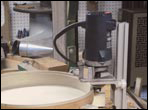 |
Product Reviews by John Calkin Calkin has built and used all kinds of setups to cut the binding channels for guitars in a long lutherie career. He tries the new Stew-Mac TrueChannel Binding Routing Jig, and likes it. |
||||
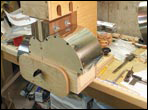 |
Supported Side Bending by Mark Roberts Mark Roberts has his own take on the Fox Bender idea. He uses old window sash weights to provide tension to the backing metal strap. Got that? No? Well, see the details in this issue. |
||||
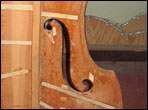 |
For a Good Time.... Upright Bass Top Replacement by Kevin Rielly You don’t expect to find graffiti inside a double bass. But there is was. |
||||
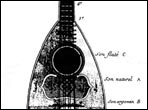 |
Questions edited by R.M. Mottola Information about Martin guitar shapes; how expectations skew the results of listening tests; Maccaferri violas; Neapolitan mandolins; and small-bodied acoustic bass guitars. |
||||
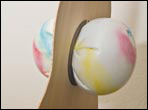 |
It Worked for Me by John Calkin, Michael Grossman, and Mike Giltzow John Calkin fixes the intonation on a classical guitar without disturbing the original bridge. Michael Grossman clamps a rosette with a rubber ball. Mike Giltzow uses xerox copies to cut inlay recesses. |
||||
 |
In Memoriam: Jess Wells Jess Wells was a fixture on the Portland Oregon lutherie scene for decades. He trained as a violin maker, but is best known for his gambas. He will be missed. Read his memoriam. |
||||
Web Extras |
|||||
